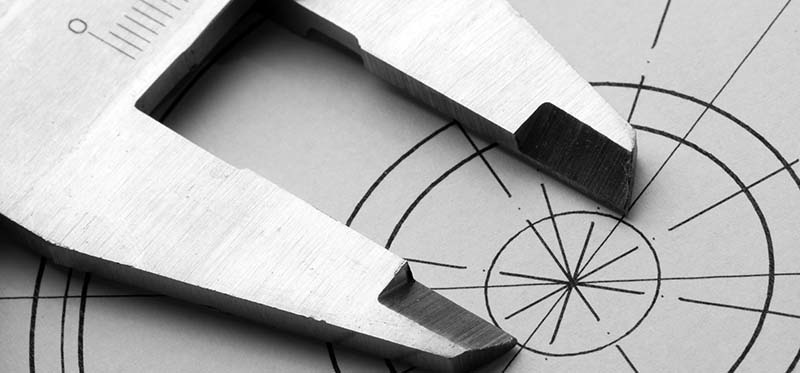In actual production, it is impossible for parts to be machined with absolute accuracy to the design dimensions. Various factors such as machine tool precision, tool wear, material properties, and machining processes can all contribute to dimensional deviations. The significance of tolerances lies in the fact that as long as the actual dimensions of the part fall within the tolerance range, the part is considered acceptable and ready for use.
At the same time, tolerance errors are one of the most common quality issues in manufacturing. In CNC machining, even the smallest tolerance errors can lead to part failure, rework, or costly project delays. If you use CNC machined parts, understanding how different types of tolerances work can save you both time and money.
Unilateral and bilateral tolerances control the allowable deviation in part manufacturing. The way these tolerances are applied affects the part’s fit, function, and manufacturability. Understanding the difference between bilateral and unilateral tolerances helps ensure precise production and that the part’s performance meets expectations.
Unilateral Tolerances
Unilateral tolerance is a unidirectional limit applied to the size of a part. It restricts the deviation to only one side of the nominal value, either above or below the nominal value, but not both. This method is particularly useful when strict control is needed to protect function or fit.
For example, if the diameter of a shaft is marked as “Φ30 -0.05”, this means the maximum allowable size for the shaft diameter is 30mm, and the minimum allowable size is 29.95mm. The size deviation is only allowed to decrease, and no increase is permitted. Similarly, a hole marked as “Φ40 +0.1” means the minimum allowable size is 40mm, and the maximum allowable size can reach 40.1mm, with the size deviation allowed only in the increasing direction.
This directional control helps improve the reliability and consistency of mating parts. Unilateral tolerances are ideal when a part must move freely within another part without being too tight. For example, shafts for frictionless sliding into holes are typically produced using unilateral tolerances.
Unilateral tolerances are particularly suitable for parts that require precise gaps. A common example is press-fit shafts or pins, whose diameters must not exceed a given value. In such cases, the shaft’s size can be slightly smaller to ensure proper fit but cannot be too large.
This method is often used in industries like aerospace, medical, and automotive manufacturing. It is especially suitable for parts that need consistent assembly or can withstand loads without deformation. When materials may expand due to heat or stress, unilateral control helps maintain critical dimensions.

Bilateral Tolerances
Bilateral tolerances allow the part’s dimensions to vary both above and below the nominal value. This provides greater flexibility during manufacturing and inspection processes without affecting the functionality of the part. Bilateral tolerances are commonly used for non-critical or aesthetic parts that can accept small dimensional deviations.
For example, if the length of a part is marked as “80 +0.1 -0.05”, this indicates that the permissible range for the part’s length is between 79.95mm and 80.1mm. The size can increase by 0.1mm or decrease by 0.05mm from the nominal dimension. Similarly, for a cylindrical diameter marked as “Φ25±0.03”, the allowed range is from 24.97mm to 25.03mm, with a deviation of 0.03mm in both directions.
This range helps accommodate typical machining variations while keeping the part within an acceptable range.
Typically, tolerances are evenly distributed, but they can be adjusted to favor one side. This is called uneven distribution tolerance, which is useful when the permissible deviation in one direction is greater than in the other. It is a flexible method when design intent allows more tolerance on one side of the nominal dimension.
Bilateral tolerances are easy to understand and are widely accepted in standard manufacturing processes. They are suitable for parts where fit or motion requirements are not stringent. This makes them ideal for components such as mounting plates, housings, or covers.
Bilateral tolerances are also very suitable for parts made from plastics or composite materials. These materials may expand or contract unpredictably, and the flexibility of bilateral tolerances helps maintain dimensional integrity. This method has proven successful in balancing dimensional variations.
Comparison of Unilateral and Bilateral Tolerances
1. Difference in Dimensional Control
Unilateral tolerances control the deviation of dimensions in a single direction only. The deviation in the other direction is not restricted by this tolerance. In practical applications, other design requirements or process methods must be combined to ensure the overall dimensional accuracy. Bilateral tolerances, on the other hand, clearly define the deviation in both directions, enabling comprehensive and precise control of part dimensions. This ensures that the actual dimensions of the part fluctuate within a smaller specified range, offering more thorough and strict dimensional control.
2. Difference in Notation Complexity
Unilateral tolerances have diverse and relatively flexible notation methods. When only one directional deviation is of concern, the notation is simple and clear, effectively simplifying the drawing content. Bilateral tolerance notation is relatively fixed and standardized. Both upper and lower deviations must be indicated. In cases where parts have many dimensions and complex tolerance requirements, the notation process becomes more cumbersome, and the tolerance information on the drawing appears denser.
3. Difference in Applicable Scenarios
Unilateral tolerances are suitable for parts where dimensional deviation is only allowed in one direction or where the deviation in one direction significantly impacts functionality. They are also ideal for situations that require simplified drawing notation. Bilateral tolerances are more appropriate for high-precision manufacturing fields that demand stringent requirements for part fit accuracy, uniformity of dimensions, and interchangeability. These are often used in applications that require high-quality performance and consistent production.
4. Difference in Machining Difficulty and Cost
Since unilateral tolerances only control deviation in one direction, machining personnel only need to focus on dimensional changes in one direction. This leads to relatively lower requirements for machining processes and equipment precision, making the machining difficulty smaller and the costs more manageable. Bilateral tolerances, which strictly control deviation in both directions, require more precise adjustment of machine parameters and tool paths during machining. This demands higher precision and stability from machining equipment, significantly increasing the machining difficulty and manufacturing costs. For example, when machining precision molds, using bilateral tolerances often requires high-precision machining centers, advanced tool systems, and experienced technicians, all of which substantially increase the machining cost.
Conclusion
Tolerances define the acceptable range of variation for part dimensions, directly impacting their functionality, fit, and manufacturability. They affect the ease of part assembly, the thoroughness of necessary inspections, and production costs. Proper tolerance is crucial to ensuring consistent and reliable performance in any application.
Correctly understanding and applying both unilateral and bilateral tolerance settings is an essential professional skill for CNC machining practitioners. It helps in producing high-quality and high-precision parts. In practice, engineers and technicians must consider factors such as the part’s use case, performance requirements, machining costs, and manufacturability when choosing the appropriate tolerance type and determining the tolerance values.



